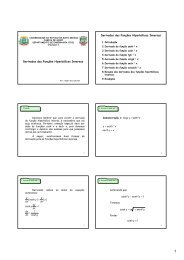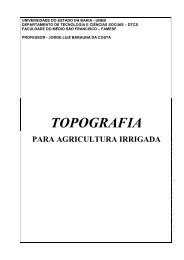Anuário Brasileiro do Arroz 2011 - Unemat
Anuário Brasileiro do Arroz 2011 - Unemat
Anuário Brasileiro do Arroz 2011 - Unemat
Create successful ePaper yourself
Turn your PDF publications into a flip-book with our unique Google optimized e-Paper software.
that impressive. Purchases of 12.3 kilos a year, in 2002,<br />
had fallen to 9.1 kilos in 22009.<br />
The change in habits, resulting from the bustling daily<br />
routine of the population, is the major cause that explains<br />
why the perfect rice-beans pair has lost space on<br />
the Brazilian kitchen tables. “People are more and more<br />
<strong>do</strong>ing their meals out, which <strong>do</strong>es not mean they have<br />
quit eating rice and beans”, comments Embrapa Rice and<br />
Beans researcher Alci<strong>do</strong> Elenor Wander.<br />
Another relevant factor, in the opinion of the researcher,<br />
is the soaring purchasing power of the people over the<br />
past years. “Under such circumstances, the consumption<br />
of rice tends to drop, as people tend to opt for other products,<br />
which they could not afford in the past”, he reckons.<br />
In the case of black-beans, explains wander, what seems<br />
to discourage the people is the great variation in prices.<br />
According to the researcher, the IBGE figures <strong>do</strong> not detail<br />
total per capita consumption, but only what happens<br />
at home. Therefore, he points out that 53% of the rice<br />
was consumed at home, in 2002; in 2009, this proportion<br />
had fallen to only 33%. “There is a slight <strong>do</strong>wntrend compared<br />
to 1997/98, when consumption reached 48 kg/person/year,<br />
and in 2010 it remained at 43 kg”, he explains.<br />
With regard to black-beans, Wander emphasizes that<br />
in 2002 consumption at home accounted for 78% of the<br />
total, receding to 54% in 2009. “Since the early 1990s<br />
black-bean consumption has risen slightly, with small<br />
variations in per capita averages”, he observes. The researcher<br />
has it that this behavior stems from price variations,<br />
as well as from minor or major insertions of the<br />
cereal into social programs. With regard to apparent consumption,<br />
he mentions that it was 12.6 kg/person/year in<br />
1990, climbing to 16.9 kg two decades later.<br />
THE TABLE IN THE WORLD The latest official<br />
data released by the Food and Agriculture Organization<br />
of the United Nations (FAO) on the global consumption<br />
of rice and black-beans date back to 2007. According to<br />
researcher Alci<strong>do</strong> Elenor Wander, the figures reveal that,<br />
in general, the use of rice as a daily staple in the world<br />
did not recede as much as it did in Brazil, and average<br />
consumption is 53 kg/person/year. “It has remained at<br />
this level for the past fifteen years”, he observes.<br />
Contrary to rice, black beans have suffered steady reductions<br />
in per capita consumption around the world,<br />
which now reaches 2.5 kg, according to FAO numbers.<br />
Wander recalls that it was 3 kg/person/year in the early<br />
1960s.


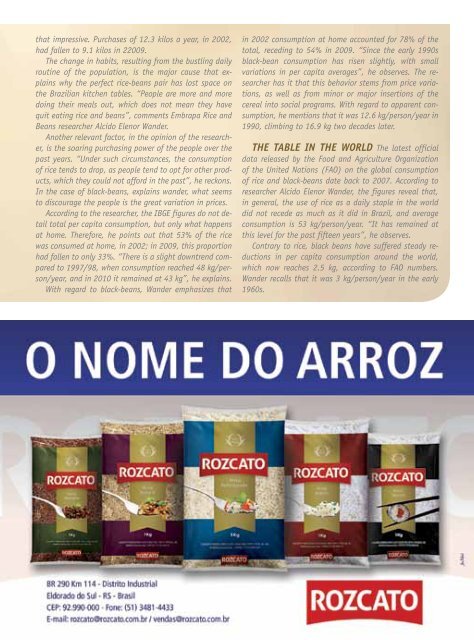
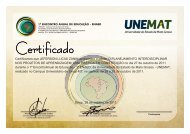
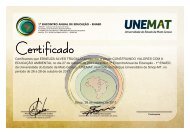
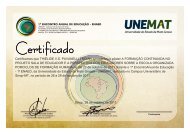
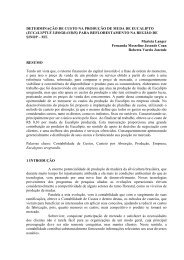
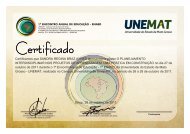
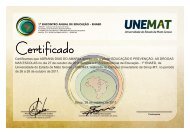
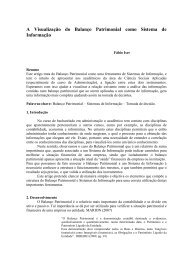
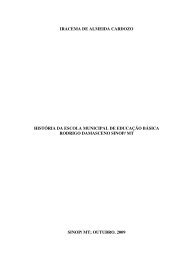

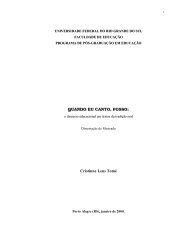
![Aula 31 - Funções Hiperbólicas [Modo de Compatibilidade] - Unemat](https://img.yumpu.com/14334654/1/184x260/aula-31-funcoes-hiperbolicas-modo-de-compatibilidade-unemat.jpg?quality=85)

![Aula 31 - Funções Hiperbólicas [Modo de Compatibilidade] - Unemat](https://img.yumpu.com/14332146/1/190x135/aula-31-funcoes-hiperbolicas-modo-de-compatibilidade-unemat.jpg?quality=85)
